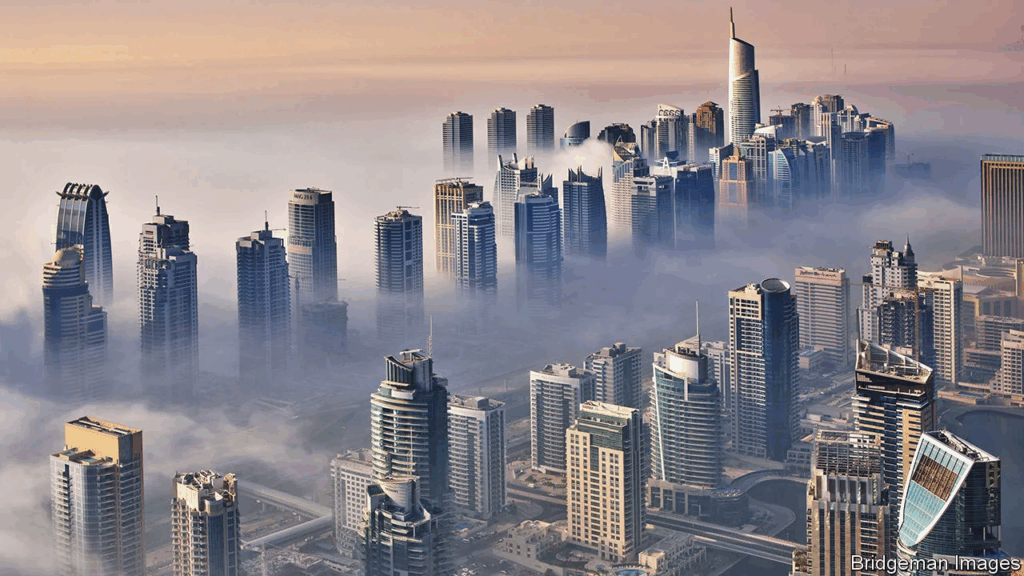According to the most recent worldwide rankings published by the Council on Tall Buildings and Urban Habitat (CTBUH), the United Arab Emirates has surpassed the United States to take the second position in the world for the number of supertall skyscrapers, or those that rise beyond 300 meters.
In addition to solidifying the nation’s position on the world architectural map, this landmark tells a larger story of urban aspiration, patriotism, and the imaginative alteration of the skyline.
The UAE is home to over 30 completed supertall buildings, the great majority of which were constructed in the previous ten years, ranging from the towering Burj Khalifa in Dubai to the elegant Adnoc Headquarters in Abu Dhabi. This quick vertical climb is a statement of purpose rather than just a competition for height.
According to the CTBUH, the UAE has become a global pioneer in fusing engineering expertise with futuristic design to create high-performance structures that are not just taller but also more intelligent, environmentally friendly, and robust.
Dubai, which currently ranks fourth globally among cities with the most built structures exceeding 150 meters in height, is at the center of this vertical revolution. More than 250 towers in Dubai have surpassed that standard, creating a remarkable blend of ambition and beauty. Anchored by the world’s tallest structure, the 828-meter-tall Burj Khalifa, Dubai’s architectural environment is a striking display of real estate vibrancy, tourism appeal, and economic diversity.
Dubai’s ascent has been rapid and meaningful. Originally a little Gulf city, it has grown into a glitzy metropolis that rivals major cities throughout the world like New York, Shenzhen, and Hong Kong. The city’s aim to diversify away from its reliance on oil and establish itself as a center for global commerce, innovation, and affluent living has been a major factor in this rise. Here, skyscrapers are more than just buildings; they are symbols of economic ambition, global significance, and national identity.
Sheikh Zayed Road, the Marina, and Downtown Dubai are home to a large number of Dubai’s buildings, and every new construction pushes the boundaries of design and function. The city’s skyline is a vertical patchwork that depicts a fusion of cultures, technologies, and economic forces, ranging from residential skyscrapers to mixed-use marvels.
The UAE has made history by being the second-most prolific supertall skyscraper builder in the world. The UAE’s rapid growth and adoption of next-generation design are challenging the dominance of the United States, which was previously the undeniable birthplace and pioneer of the skyscraper age. This fits into a broader pattern whereby Middle Eastern cities are playing a bigger role in the global discourse on livability and urban shape.
More than 200 buildings in the UAE are currently taller than 150 meters, and more than 30 of them are taller than 300 meters, according to CTBUH. The nation has succeeded in its goal of erecting famous buildings that serve as focal points for international attention and economic activity. In addition to defining their cities’ skylines, structures like Marina 101, Emirates Towers, and the Capital Gate have achieved international recognition.
More than 200 buildings in the UAE are currently taller than 150 meters, and more than 30 of them are taller than 300 meters, according to CTBUH. The nation has succeeded in its goal of erecting famous buildings that serve as focal points for international attention and economic activity. In addition to defining their cities’ skylines, structures like Marina 101, Emirates Towers, and the Capital Gate have achieved international recognition.
Sharjah and Abu Dhabi are also helping the UAE’s increasing trend. With the construction of civic, business, and residential structures that prioritize sustainability and design integrity, Abu Dhabi’s skyline has considerably evolved. A new generation of high-rises that blend affordability with contemporary urban living is being built in Sharjah.
Property analysts claim that the UAE’s architectural accomplishments are cultural icons that express the nation’s openness to international talent, capital, and innovation rather than only being technical marvels. Attracting millions of tourists, investors, and visionaries from all over the world, they serve as memorials to the country’s transformation from desert villages to metropolitan wonders.
